An art therapist outlines how kids' art can be used to help them and the rest of the family express emotions and bond together. Lisa Salmon reports.
For most parents, children’s art is just something to stick on the fridge and stow away when possible. But those splodgy works of art could actually be a window to their soul. Honestly.
Instead of trying to get young children, who often have a very limited vocabulary, to talk about how they feel, their drawings can be used to help them express their emotions. And while such a process is a form of art therapy, you definitely don’t have to be a trained art therapist to use it.
Art psychotherapist Fransie Frandsen says art therapy is very different from the popular belief that it’s just the interpretation of drawings – explaining that it uses art as a form of communication and expression, helping to identify, convey and process difficult emotions.
“As an art psychotherapist working with children, I find the idea of artwork becoming a ‘third person’ in a session particularly important,” she says. “This dialogue between therapist, child and artwork helps to make the process feel safer, so it becomes possible to gently turn on the lights of those dark rooms they avoid.”
Frandsen, whose children’s book Do Grannies Have Green Fingers is about to be published, says as well as art therapy being a specialised area of mental health therapy, creating art through drawing, painting, colouring or sculpture is therapeutic in itself. bringing focus, satisfaction and calm that remains long afterwards.
“Whether you’re in lockdown, holidays or at any other time, there are many art activities that can be done together at home, which are fun and at the same time hugely beneficial for a child’s wellbeing,” she says. “With the emphasis on the process of doing art together, rather than what the drawing or painting looks like, these activities can encourage bonding, create dialogue and allow family members to share and talk about the world and their feelings.”
Here, Frandsen suggests 5 fun art activities that will help children and families bond and express their emotions…
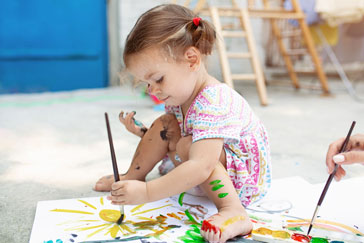
1. Draw a Mandala
The word ‘mandala’ means circle in ancient Sanskrit and is a pattern with a circle within a circle, representing the universe. Start by drawing or tracing a small circle in the centre and then continue drawing a few outward concentric circles and patterns to complete the mandala. Your mandala can then be coloured in with coloured pencils or markers. Adults can help smaller children to draw the basic outline for their mandala. Because of the repetitive nature, drawing mandalas is calming and helps focus the mind. Colouring in the finished mandala is also relaxing as the outlines serve as boundaries or frameworks within which the colouring can be done.
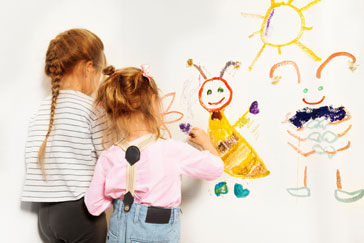
2. Draw or paint your emotions
Ask all members of your family to draw or paint how they’re feeling at that moment. When done, ask everyone to talk about what they’ve painted and encourage them to talk about the colours they’ve used, the marks or images they’ve painted and why they made that choice. Talking about feelings in a family setting isn’t always easy and this is an excellent exercise to build trust in each other and create dialogue about our inner worlds. It’s important that there’s no right and wrong and that adults reassure children their feelings are heard and valid, no matter what they are.
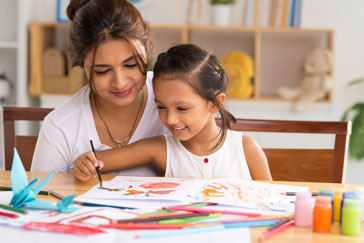
3. Draw outside
Take art materials into the garden, where parents and children can pick a flower or find a feather, leaf or insect, and then talk about what they found and why they chose it. Then, everyone should draw or paint their object. This is a great way to encourage dialogue and to learn about each other, while spending peaceful time outdoors.
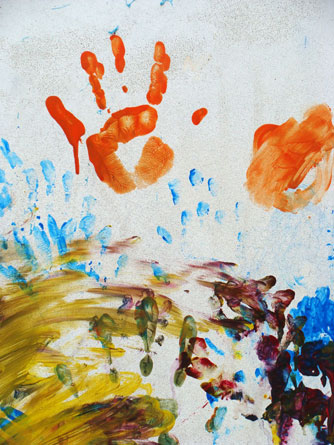
4. Make clay handprints
Parents and children need a ball of clay each, which should be flattened until it’s roughly the size of each person’s palm. Press your hand down into the clay to create an imprint of your hand. Now compare all your prints and talk about how similar, but different and special we all are. You could also print the paws of cats and dogs. When the prints are dry, they can be painted and exhibited together. The tactile, sensory quality of clay is a relaxing material to play with and especially therapeutic where anger or control is an issue. Making handprints is an excellent way of encouraging dialogue about how unique we all are. Assembling them into a family artwork is not only bonding, but is visual confirmation of each family member’s valued part in the family.
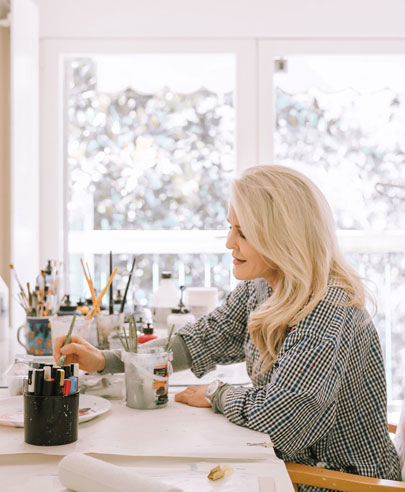
5. Do a group painting
Use a large sheet of paper or several pieces glued together. Arrange the family members equally around the paper and ask each member to start painting where they are and to work towards the middle until all paintings meet in the centre. There are no restrictions on what or how each member chooses to paint. When completed, ask members to describe what it was like for them to work together, what feelings they experienced and what they think of the finished artwork.
Once again, this exercise is excellent in opening dialogue. Group paintings are bonding, but can often evoke intense feelings about your place in the family, entering into another’s space, and boundaries being infringed. Reassure everyone that all feelings are valid, and positively reflect on the value of creating something together as a family.
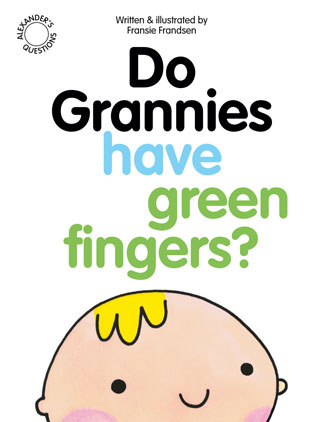
Do Grannies Have Green Fingers by Fransie Frandsen is published by Artfox.Bookwolf on June 11, priced £7.99.
